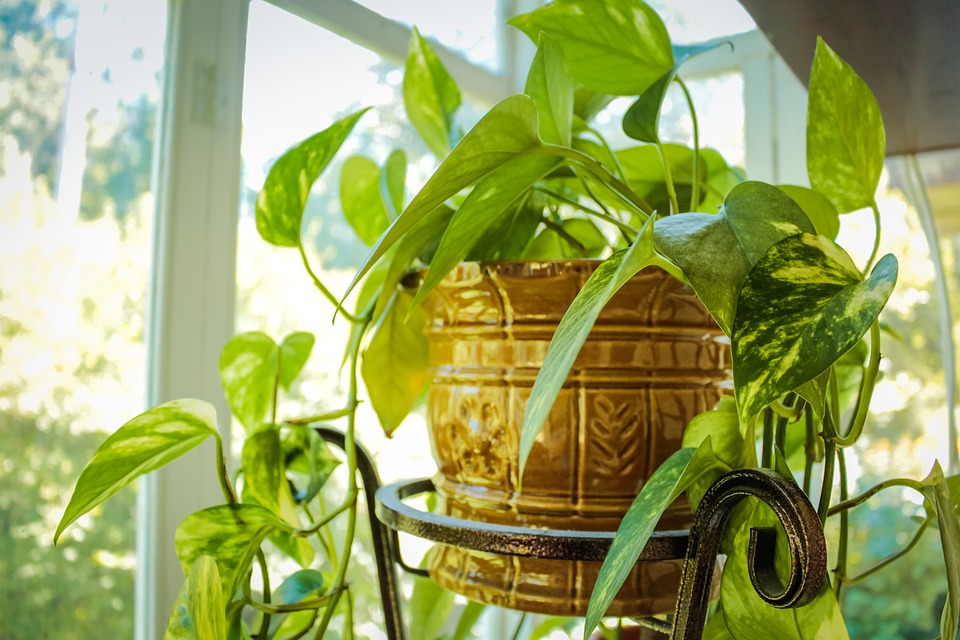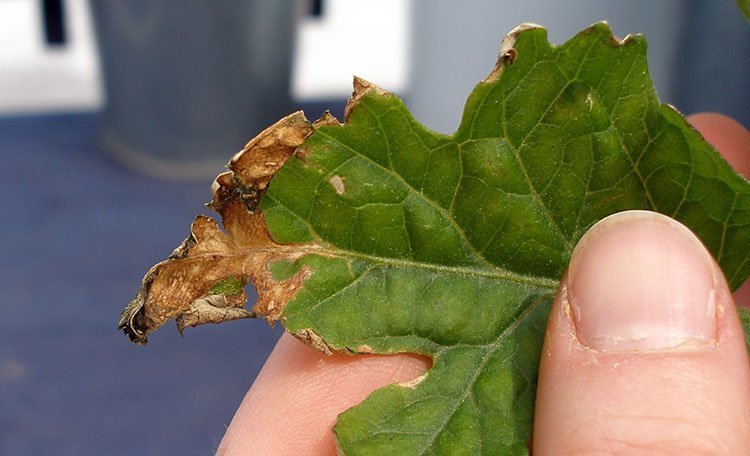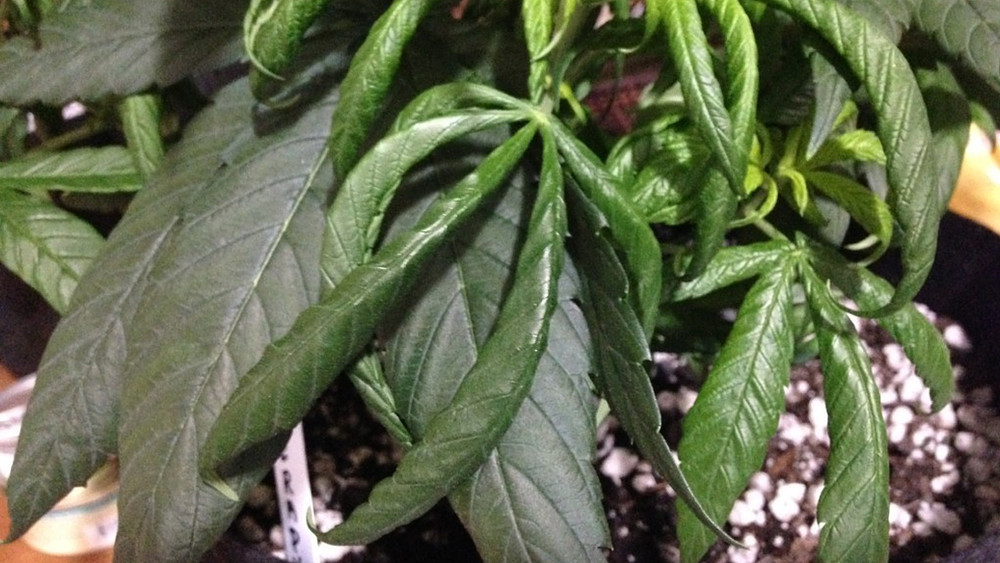Nitrogen (N) plays a vital role in a plant’s life. It is an essential element for their growth and reproduction. The balanced amount of nitrogen encourages plants’ healthy and lush green growth. On the other hand,with nitrogen toxicity, the plants become more attractive to insect pests and other harmful microbes. It also makes plants weak and susceptible. Because excess nitrogen in plants promotes their vegetative growth (dark green leaves) and reduces the vigor of the stem, that’s why to have a healthy growth of houseplants; there is no need for too much nitrogen applications; only balanced amounts are suitable.
In gardens and houseplants, too much nitrogen leads to nitrogen toxicity and negatively influences their growth and aesthetics.


The nutrient deficiencies and toxicity can be defined as:
Nutrient or nitrogen toxicity: When a plant has too much nutrition and cannot germinate and grow properly due to the toxic effects of nutrients. It causes too much leave growth and no flower and fruit.
Nutrient deficiency: While nutrient deficiency is when a plant lacks a nutrient from its complete plant foods (essential nutrients), the plant will not grow and reproduce. The nutrient deficiency symptom includes no leaves, root, flower, or fruit growth.
Related: Nitrogen for Houseplants: Why is It Important for Growth and Reproduction of Plants?
What is Nitrogen Toxicity?
Nitrogen is an essential food for plant healthy growth, and three to four percent of its contents contribute to lush green growth. However, plants need more nitrogen than other nutrients because it is an integral part of photosynthesis and protein-building block. And the deficiency of nitrogen in plants means death. At the same time, excess nitrogen means a delay in the flowering stage and excessive growth at the vegetative stage.
Nitrogen is an integral part of nucleotides and DNA, enabling plants to reproduce and grow; plants will not survive indoors or outdoors without nitrogen.
In addition, nitrogen toxicity in plants results in deformed or clawed leaves, abnormally dark green, and weak stems.
What are the Symptoms and Signs of Nitrogen Toxicity?
It occurs in gardens and houseplants due to overfeeding that is required for growth. The symptoms and signs include:
1. Yellowing or browning of leaves

2. Curling of leaves or cupping

3. Browning of leaves at the tips or nutrient burn

4. Abnormally dark green leaves

5. Deformed and clawed leaves
6. No fruit yield
7. Sometimes broad yellow spots on leaves eventually lead to leaf death
Excess of nitrogen burns the leaves, and in severe conditions, plants die due to toxicity. The excess nitrogen levels also interfere with the uptake of other essential nutrients and cause stunted growth.
When a plant is stressed due to injury, it absorbs more water to reduce stress and prime defense responses. Unfortunately, this behavior of plants enhances nitrogen levels and worsens toxicity. If not treated immediately, it will turn the plant yellow and die. Therefore, effective measures should take immediately to treat nitrogen toxicity.
What are the Factors Responsible for Nitrogen Toxicity?
It is most frequently caused by
- Overfeeding with an excessive nitrogen solution
- Too much nitrogen in the soil
To prevent nitrogen toxicity in plants (indoors and outdoors), maintain a specific nutrient solution for different plants. And do not overapply the growing medium and not on foliage leaf tips. Instead, consistently maintain and apply sufficient nutrient solutions to achieve optimal growth.
Problems that are Confused with Nitrogen Toxicity
Following are the houseplant problems that are confused with nitrogen toxicity
- Yellowing of leaves due to iron deficiency
- Downward curling of leaves due to overwatering
- Foliage leaf tips burn due to excessive sun exposure
- Stunted growth due to excess nutrients

How to Fix the Nitrogen Toxicity?
Plant growth relies on balanced nutrient levels. The deviation in nutrient levels leads to toxicity symptoms. Such as the, nitrogen deficiency will stunt plant growth while excess levels will produce deformed yellow leaves, weaker stems, and wilted plants. However, there are many ways to fix too much these kind of problems. Such as:
- One of the best ways to fix the nitrogen toxicity problem is by adding organic matter (dead leaves, straw, and broken twigs) to the soil. Then the organism present in the soil will work on organic matter and release nitrogen.
- Using sawdust as a mulch will help decrease nitrogen toxicity in the soil.
- Flush the excess nitrogen from the soil through the water with a neutral pH.
- Also, avoid excess nitrogen fertilizer applications
- Add potassium to the soil to accommodate the nitrogen toxicity levels.
- In the case of worse nitrogen toxicity, try to repot the houseplants with fresh soil and correct pH.
- Use the fertilizers with less nitrogen to avoid nitrogen toxicity.
Frequently Asked Questions
What are the Four Symptoms of Nitrogen Toxicity?
The most common symptoms are the dark green appearance of leaves, excessive growth at the vegetative stage & flowering stage (slow growth of reproductive parts), burning of leaf tips, and succulent appearance of the stem.
How Do You Reduce Nitrogen in Potted Plants?
In potted plants, add sawdust and organic matter to reduce nitrogen levels. The microbe will work on the organic matter added to the soil to release manageable amounts. Next, add moderate amounts of potassium solution to remove excessive nitrogen. Also, flush the nitrogen from potting soil with fresh water. Finally, remove the pot in severe conditions and replant it in a new pot with fresh soil.
How Long Does it Take to Recover Plants from Nitrogen Toxicity?
In most cases, it can be fixed with accessible practices such as flushing fresh water and adding organic matter and seaweed. It gets removed within five to seven days.
How Do You Neutralize Excess Nitrogen in Soil?
The excess nitrogen in the soil can be neutralized by digging organic matter in the soil. Also, the nitrogen levels can be balanced by adding woodchips and sawdust. Woodchips and sawdust soak up the excess nitrogen.
Sugar also helps in nitrogen neutralization in soil. It has a carbon element that attracts nitrogen to the soil. The material with high carbon contents soaks up the nitrogen in the ground.
What Plants Should Not Be Fertilized?
The fertilizer application is essential for plant growth because the soil does not provide all nutrients most plants need for development. Therefore, fertilizer is added as nutrition. However, indoor plants can be maintained with little fertilizer. Such as roses and Begonias.
What is the Best Indoor Plant Food?
These are the best foods for indoor plants. These include Jacks Classic all-purpose fertilizer, miracle gro plant food, organic liquid seaweed and kelp indoor plant fertilizer, and Osmocote slow release plant food plus outdoor & indoor. These fertilizers should be applied at the beginning of the growing season and always use slow-release fertilizers for indoor plants.
Sources for Further Reading
- Nitrogen Toxicity in Plants. (n.d.). Trifecta Natural. Retrieved January 14, 2022, from https://www.trifectanatural.com/problem-identifier/nitrogen-toxicity-in-plants/
- Goyal, S. S., & Huffaker, R. C. (1984). Nitrogen toxicity in plants. Nitrogen in crop production, 97-118.
- McCauley, A., Jones, C., & Jacobsen, J. (2009). Plant nutrient functions and deficiency and toxicity symptoms. Nutrient management module, 9, 1-16.
Read and learn about What Are Mealybugs? How to Kill Them on Succulent Plants?
Find out about Pothos Leaves Curling, its Causes and Easy Ways to Fix Leaf Curl and Find Out How to Save a Cactus from Changing Color to Yellow or Brown
Editor’s Recommendations
Calcium for Houseplants: Why is It Important for Growth and Reproduction?
Epsom Salt for Plants: Is it Good for Your Garden & How to Use it?







